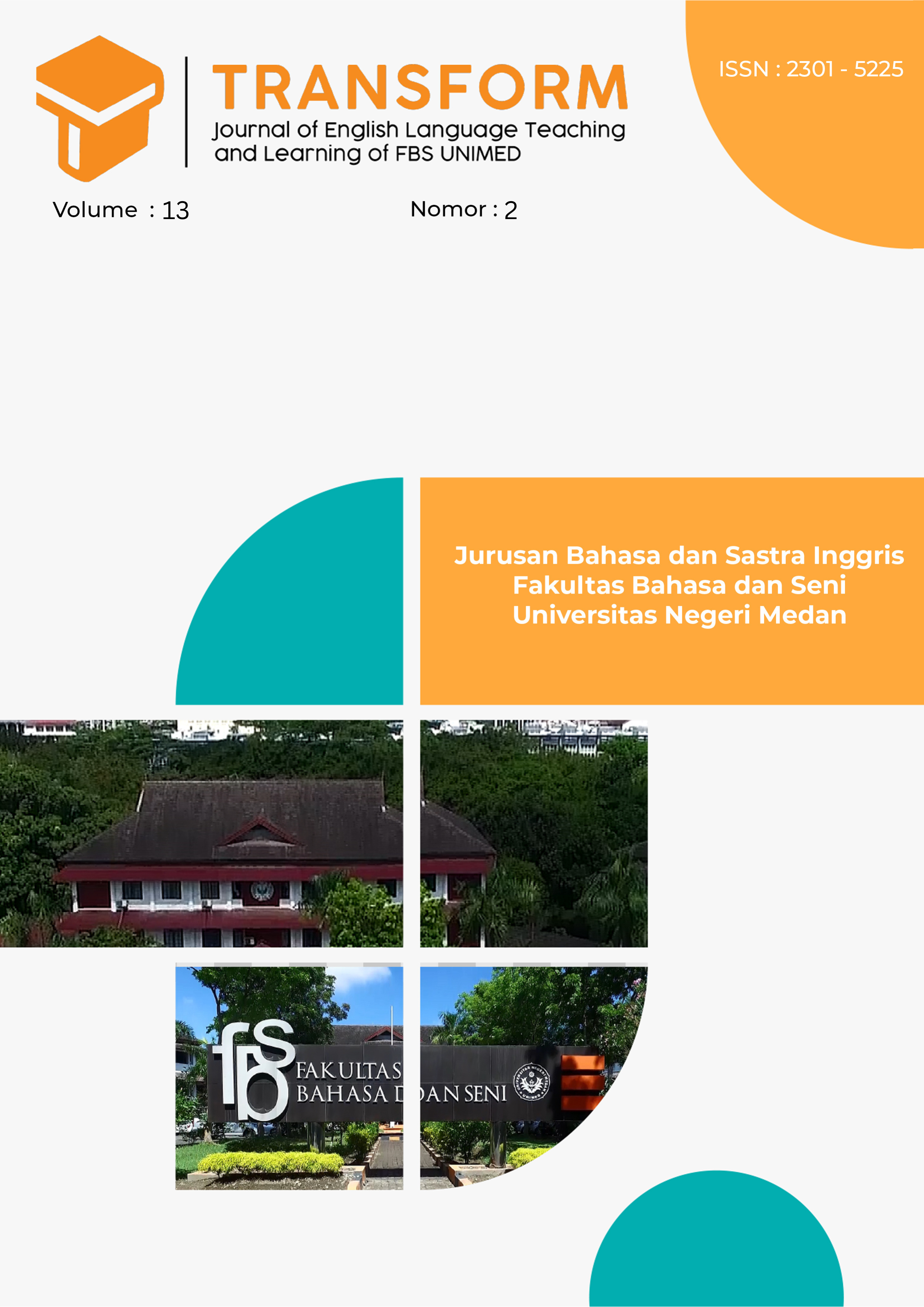An Analysis of Readibility of English Textbook Used by The Second Grade Students of SMK Negeri 1 Kelayang
DOI:
https://doi.org/10.24114/tj.v13i2.66768Keywords:
Reading, Textbook, ReadibilityAbstract
Based on the interview with an English teacher at SMK Negeri 1 Kelayang, the textbook used by the teacher to teach English is “Forward an English by Erlangga 2017”. In relation to the students’ understanding of texts, Parekeme and Abgor (2012) state that one of the factors determining students’ understanding of a text is text readability. Thus, this becomes the reason that the researcher decides to conduct this study on analyzing the readability level of selected reading texts in the English Zone textbook for the tenth grade of senior high school students by Penerbit Erlangga to see their readability level. The purpose of this research is to know the readibility level of English Textbook used at the second grade of SMK Negeri 1 Kelayang. There were 25 students as samples of this research. This research used content analysis method with quantitative approach. In collecting the data, the researcher distributed a test called Cloze test. The result was the mean score of the Cloze test was 18. Based on the judgement of the students’ readibility level, the score below 40 is classified as frustration level. In conclusion, that the English textbook at second grade students of SMK Negeri 1 Kelayang is not appropriate for the students.References
Allington, R, and Michael S. (1980). Learning through reading in the content Areas, Lexington: D.C Health and Company.
Asem. (2012). Readability assessment of printed materials: Going beyond readability formulas. International Journal of Environment, Ecology, Family and Urban Studies (IJEEFUS), 2(4).
Bertola. (2012). Readability of language textbooks prescribed for junior secondary schools and students‟ performance in reading comprehension in Bbayelsa state, Nigeria. British Journal of Arts and Social Sciences, 9(1).
Bowers, R, and Christhoper B. (1991). Applied Linguistic and English Language Teaching, London: MacMillan Publisher Limited.
Cetin, E. & Sidekli. S. (2018). Reading comprehension skills in terms of the sentiments given in reading texts. International Journal of Evaluation and Research in Education (IJERE), 7(4).
DuBay. (2004). The principle of readability. Costa mesa.
DuBay, W.H. (2007). Smart Language: Readers, Readability, and the Grading of Text.
Els, T, V, et. al, (1984). Applied Linguistic and the Learning and Teaching Foreign Language, London : Edward Arnold Ltd.
Erliana, S. (2011). Improving reading comprehension through directed reading-thinking activity (DRTA) strategy. Journal on English as a Foreign Language, 1(1).
Harrison, C. (1999). Readability in Bernard Spolsky (ed.), Concise Encyclopedia of Educational Linguistics. Amsterdam 8.: Elsevier Science Ltd.
Hornby, A, S. (1397), Oxford Advanced Learner’s Dictionary of Current English. Oxford: Oxford University Press.
Joseph. (2014). Readability level of recommended chemistry textbooks and students’ academic performance in senior secondary schools in Ekiti State, Nigeria. International Journal of Education and Research, 2(9).
Kusdemir, Y & Bulut, P. (2018). The relationship between elementary school students’ reading comprehension and reading motivation. Journal of Education and Training Studies, 6(12).
Lalău, E. (2014). “Teachers‟, pupils‟, and parents‟ opinions on primary textbooks: Their selection, quality, and use”, Acta Didactica Napocensia, 7(3).
Nuttal, C. (1982). Teaching Reading Skills in a Foreign Language, Oxford: Heinemann International.
Parakeme, B., A,. D., & Cathrine A., A. (2012). Readability of Language Textbook prescribed for junior secondary schools and students’ performance in reading Comprehension in Bayelsa State, Nigeria. British Journal of Arts and Social Science, 9(1).
Pikulski, J. J. (2002). Readability, New York: Houghton Miflin Company.
Reed, A., J., S., et al. (1998). in the classroom: An Introduction to Education, 3rd edition, New York: Mcgraw Hill.
Schulz, R., A. (1982). Literature and Readability: Bridgin the Gap in Foreign Language Reading. FORUM
Downloads
Published
How to Cite
Issue
Section
License
Copyright (c) 2025 Susmitra Muhammad Efendi, Nurdiana

This work is licensed under a Creative Commons Attribution-ShareAlike 4.0 International License.
Authors who publish with this journal agree with the following terms:
- Authors retain copyright and grant the journal right of first publication with the work simultaneously licensed under a Creative Commons Attribution License that allows others to share the work with an acknowledgment of the work's authorship and initial publication in this journal.
- Authors are able to enter into separate, additional contractual arrangements for the non-exclusive distribution of the journal's published version of the work (e.g., post it to an institutional repository or publish it in a book), with an acknowledgment of its initial publication in this journal.
- Authors are permitted and encouraged to post their work online (e.g., in institutional repositories or on their website) prior to and during the submission process, as it can lead to productive exchanges, as well as earlier and greater citation of published work (See The Effect of Open Access).
- This work is licensed under a Creative Commons Attribution-ShareAlike 4.0 International License.








